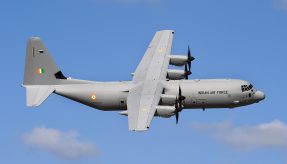
The Missile Defense Agency (MDA) has awarded Lockheed Martin a $459 million contract modification for production and delivery of interceptors for the Terminal High Altitude Area Defense (THAAD) weapon system.
The modification brings the total contract value to $1.28 billion with funding provided in 2017 and 2018. The new interceptors support US Army THAAD units and growing operational requirements.
THAAD is a key element of the Ballistic Missile Defense System (BMDS), and is highly effective at protecting America’s military, allied forces, citizens and critical infrastructure from short-, medium- and intermediate-range ballistic missile attacks.
The system is rapidly deployable, mobile, and is interoperable with all other BMDS elements, including Patriot/PAC-3, Aegis, forward-based sensors and the Command, Control, Battle Management and Communications system.
Richard McDaniel, Lockheed Martin’s vice president for the THAAD system, said: “The THAAD system’s capability and reliability have been demonstrated with 15 out of 15 hit-to-kill intercepts dating back to 1999, and by exceeding readiness rates currently being experienced in the field with operationally deployed batteries.
“THAAD interceptors defeat dangerous missile threats our troops and allies are facing today, and have capability against advancing future threats. Our focus on affordability, coupled with efficiencies of increased volume, is providing significant cost-savings opportunities to meet growing demand from the U.S. and allies around the globe.”
If you would like to join our community and read more articles like this then please click here.
Ballistic Missile Defense System Lockheed Martin Missile Defense Agency THAAD







